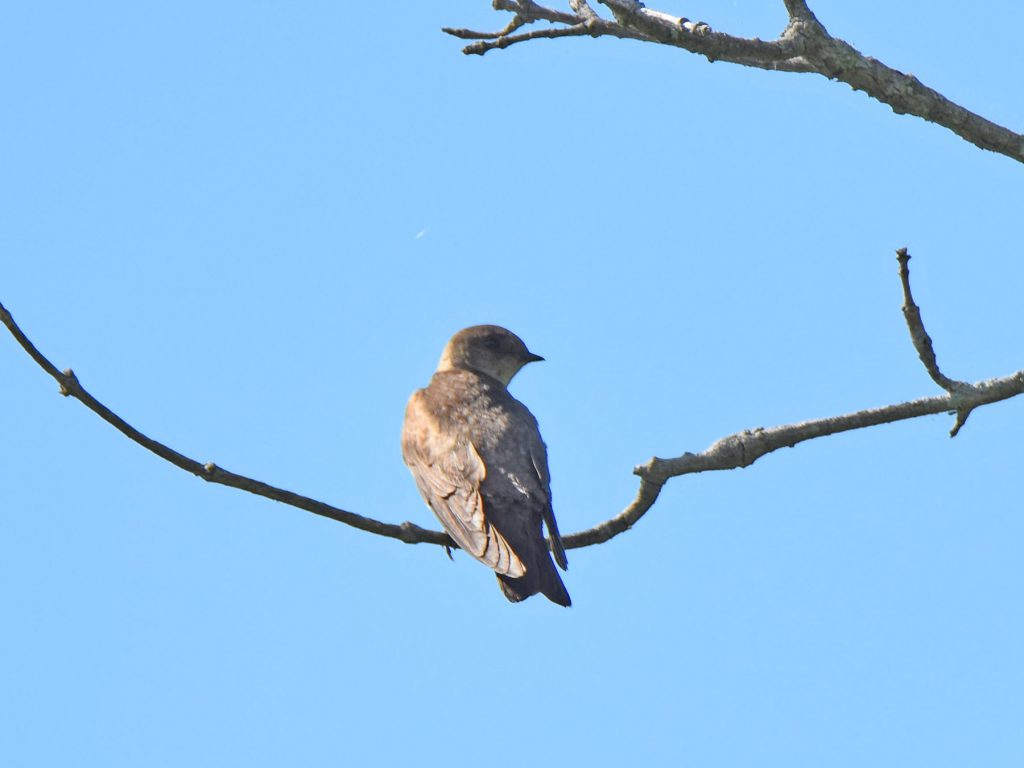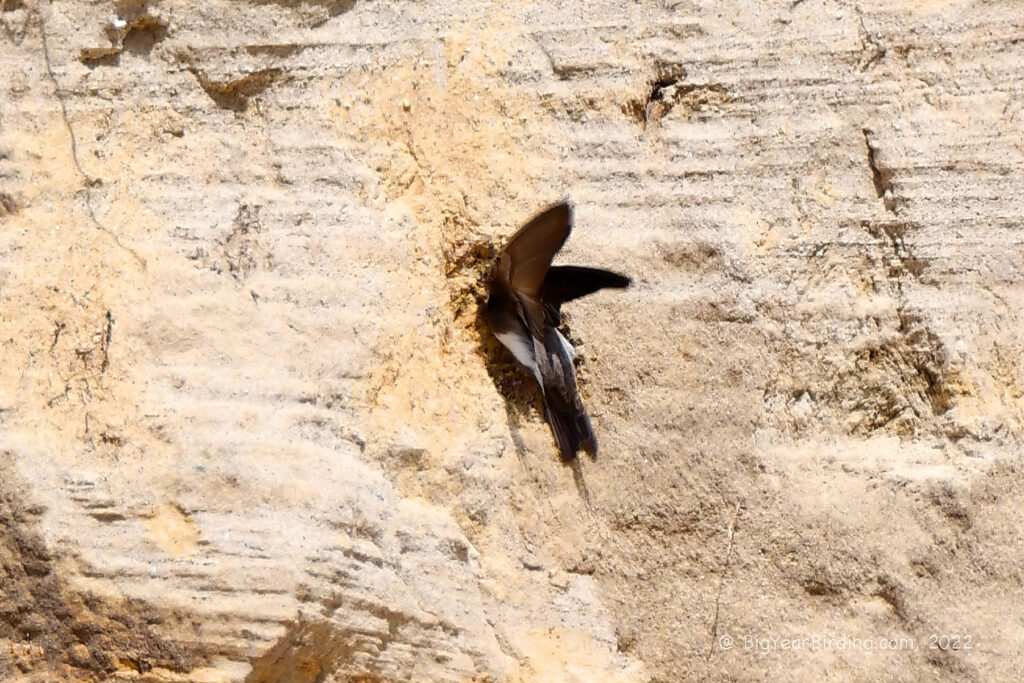
The Bank Swallow (Riparia riparia) is a small bird species that belongs to the swallow family. It is a migratory bird that breeds in North America and winters in Central and South America. Bank Swallows are known for their distinctive field marks, including their brownish-grey upperparts, white underparts, and brown band across their chest.

Bank Swallows have a length of approximately 5 inches (13 cm) and weigh about 0.5 ounces (14 grams). They have a forked tail, which distinguishes them from other small birds. Their wings are long and pointed, allowing them to fly quickly and gracefully through the air. Male and female Bank Swallows look similar, with the male having a slightly larger head and bill.
During migration, Bank Swallows travel thousands of miles from their breeding grounds in North America to their wintering grounds in Central and South America. They usually begin their migration in late summer or early fall and return to their breeding grounds in the spring. Some Bank Swallows may travel as far as 7,000 miles (11,000 km) each way during migration.
Bank Swallows are colonial nesters, meaning they breed in large groups in burrows or holes in sandy or gravelly banks near water. The female lays 4-5 eggs, which hatch after about two weeks. The young leave the nest after three weeks and are fed by their parents for another week before becoming independent.

In recent years, Bank Swallow populations have declined due to habitat loss and other factors. Conservation efforts have been implemented to protect nesting sites and promote habitat restoration. Despite these challenges, Bank Swallows remain an important part of North America’s avian biodiversity, and their migratory journey continues to inspire awe and wonder in bird enthusiasts and nature lovers alike.

